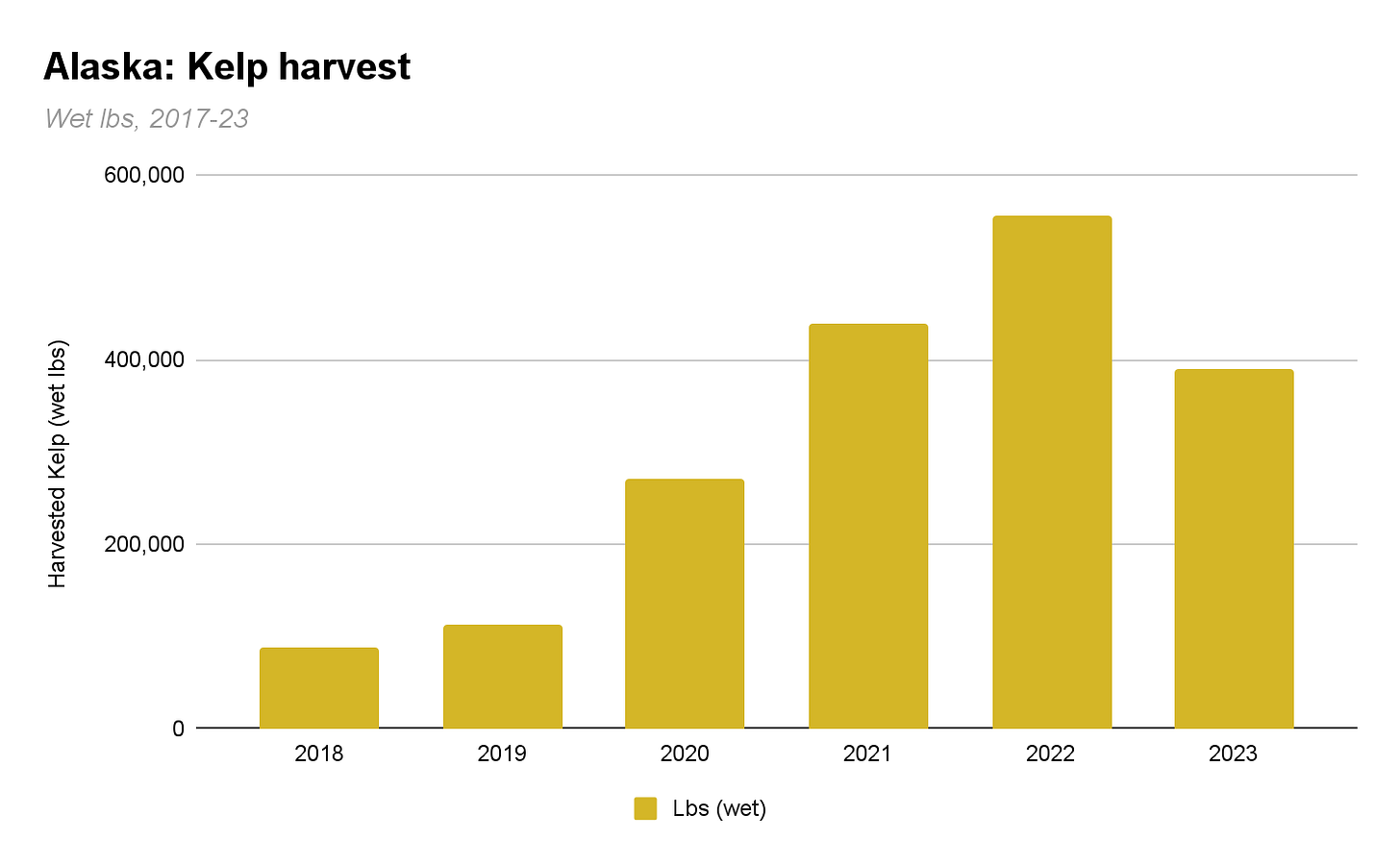Alaska kelp harvest down 30% in 2023 as farmers wait for market to catch up
Results from our 2023 survey of kelp growers in Alaska
Over the last few years, Alaska’s seaweed farmers have rapidly expanded. Production has shot up from just 89,000 wet lbs in 2018 to more than 550,000 last year (see our 2022 survey for more details). This year, however, the numbers paint a rather different picture.
We spoke to half a dozen farmers across the state (if we missed you, please reach out!). All the data was self-reported and although we received updates from the same number of farmers as last year, we know of a few farmers who did not respond, so this total is probably a bit lower than reality. The results: total production in 2023 was 389,900 wet lbs, down 30% on last year.
The split of species (alaria vs. saccharina) remained constant at 16% vs 84% of the total.
After such rapid growth, why is production declining? It’s quite likely that in 2022 farmers were putting exploratory feet in the water, to understand different sites and learn how to grow kelp. However, the dominant factor is likely softer than expected demand for Alaska’s primary format: frozen kelp.
In conversations with farmers, a number told us that they were now mostly growing kelp that had already been contracted but some of the inventory is sitting in cold stores unsold. Unfortunately, freezing is an expensive way to store the crop and makes transportation costly. Kelp is 90% water after all and no one wants to pay to ship water around.
Alaska currently lacks the infrastructure to produce a dried product locally. Moreover, formats that stabilize seaweed without freezing or drying have yet to get to scale. Due to these market bottlenecks and lack of firm commitments to purchase kelp, growers (correctly) decided to put less seed in the water and thus production is lower this year.
Of course, lower production is not the news many (including us) want to hear. But 2023 shows there is more work to be done in building demand for kelp-based products in the US market and investing in the infrastructure needed to bring those products to scale.



